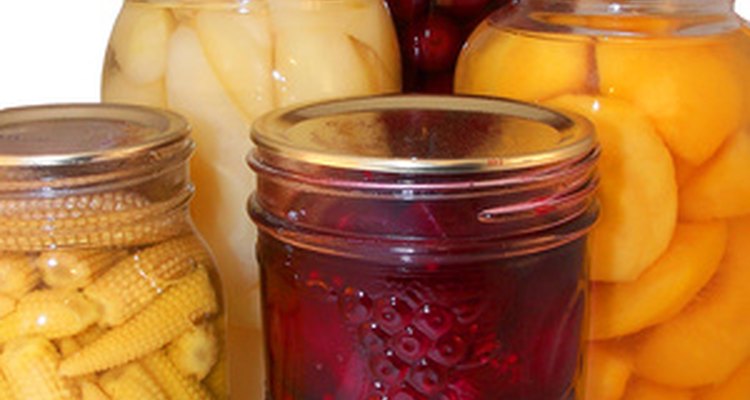
Putting up fresh vegetables and fruits in mason jars and lining your pantry with them creates a tremendous feeling of satisfaction. Home canning does not require sophisticated equipment or a high degree of skill, but it does require a heightened attention to proper procedures. In spite of your best intentions, there are times when microorganism growth is not destroyed in the canning process and your food spoils.
Identifying Spoiled Food
Microorganisms are always floating around in our homes, and sometimes they begin growing on surfaces. If you find a black growth on the outside of one of your jars of home-canned food and the jar is still sealed (i.e. the lid does not move when you press down it with your finger), it should be safe to eat. Simply wipe it off and use. However, if you open a jar of your home-canned food and find black growth on the inside of the jar (or mold, seepage, disagreeable odor or cloudiness), or the jar is not sealed, don’t eat it. A properly sealed jar provides resistance when you are opening. Remember the saying "When in doubt, throw it out." It is never worth it to risk your health.
Getting Rid of Spoiled Food
Some spoiled food can be easily disposed of. High-acid items like pickles, apple sauce, plums, tomatoes, and pears can be thrown in your garbage or compost without the worry of coming into contact with contaminants. This is not true for low-acid foods. Items such as beans, carrots, peas and corn can contain harmful microorganisms like botulin. Place the lid, screw top and jar (with the food still in it) in a saucepan, cover it all with two inches of water and boil hard for 30 minutes. Use a pan deep enough that the water won’t spill on your stove as it boils. Let it cool and discard the contents. Clean the saucepan (and anything else that came in contact with the contents) with a solution of one part chlorine bleach to five parts water.
Review Proper Procedures before Canning Again
If you find that your food has spoiled, it is best to carefully look at your canning procedures before canning any more food. The first thing to note is that you should only use canning procedures written after 1994. Acid levels in food have changed since then (particularly in tomatoes) and the newer recipes are adapted to these changes. Select only fresh and unspoiled food to put up. Ensure that your jar rims are free of nicks or cracks that can prevent proper sealing. Wash all of your jars, lids and screw bands in hot, soapy water and keep them hot until they are used. Covering them with hot water is ideal. Lids should be kept in a saucepan full of hot water, but not boiled and screw bands should be kept on a clean towel on the counter. Jar rims and threads should be wiped with a damp, clean cloth before filling since food left on the rim can interfere with the vacuum seal. Fill your jars to the recommended heights to allow for the proper build up and release of pressure in the jar. Tighten the jars just until resistance is met, since over tightening can prevent them from venting and establishing a tight seal. Ensure that jars are covered by at least one inch of water when using the boiling water canning method and process them for the time recommended in the recipe, only counting the time the water is at a rolling boil. This ensures the temperature is high enough to destroy the microorganisms that can spoil your food. At the end of processing, allow the jars to rest for five minutes before removing them from the water to stabilize the pressure inside the jars.
Related Articles

Why Do Canning Jars Pop While Cooling?

Instructions for Canning With a ...

How to Vacuum Seal Jars

How to Heat Process Mason Jars to Seal

Maximum Storage Temperature of Canned ...

Does Canned Soup Go Bad?
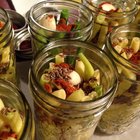
How Long Can Food Stored in Canning ...
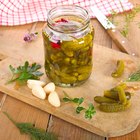
How to Dry Pack Long-Term Food in Mason ...

How to Can Salmon Fish

How to Use Citric Acid in Canning

How Long Are Canned Meat & Vegetables ...

How to Store Dehydrated Foods
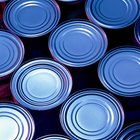
Can You Freeze Canned Goods?

What Are the Dangers of Plastic Bags ...

How Long After the Expiration Date Can ...

What Are the Best Containers to Freeze ...
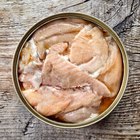
How Long Can You Keep Canned Salmon?
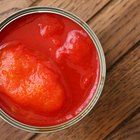
How to Preserve Salsa Made With Canned ...

How Long Is Sauerkraut Good to Eat if ...

How Long Can Canned Pickles Stay Good?
References
- Kingry, J., & Devine, L. (Eds.). (2006). Ball Complete Book of Home Preserving. Toronto, Ontario, Canada: Robert Rose Inc.
- Clemson University Extension: Common Canning Problems
- University of Minnesota Extension: Home Food Preservation Troubleshooting Guide
Writer Bio
Suzanna Didier's work appears in online publications including the National Geographic website, SFGate and Local.com. She is an avid cook who lives on a hobby farm, direct-markets organic produce to local restaurants and has taught at the preschool, elementary and college levels. Didier holds a Master of Arts in education from the University of Oregon.
Photo Credits
canned fruit image by dwags from Fotolia.com